Visit Big Foot Museum For An Unforgettable Experience In 2025
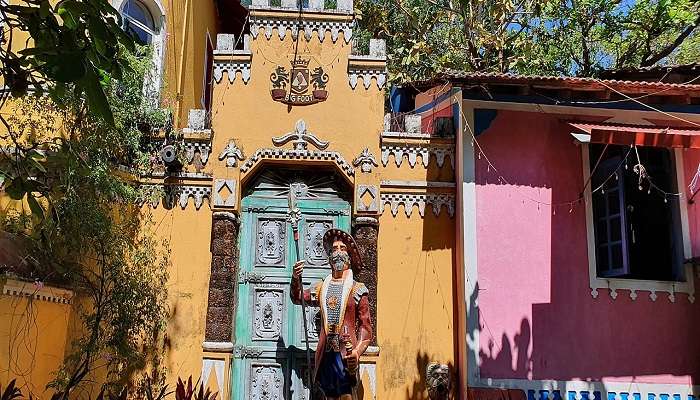
Ancestral Goa Museum is an open-air museum that presents a glimpse into Goa’s rural life. Also known as Bigfoot, this museum stands beautifully in a small village called Loutolim. The core idea of this museum is a miniature Goan village which depicts the rural life of Goa as it was about a hundred years ago. The Big Foot Museum has a great collection of art and other traditional artefacts, featuring artwork done by artists of state and national fame and also by local children. This popular tourist spot is privately run by the artist Mahendra Jocelino Araujo Alvares.
About Big Foot Museum
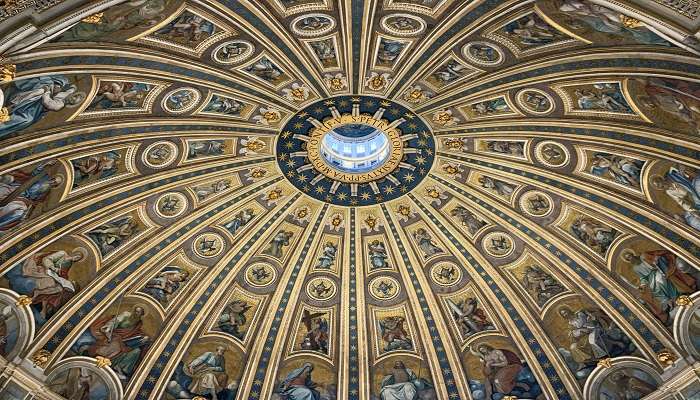
In the simplest of words, Big Foot Museum is far from your general definition of a museum. It is more of a cultural hub dedicated to first conserving and then promoting the true Goan culture and, at the same time, striving to present the customs and traditions of Goa’s rich heritage in their most authentic forms. It also raises awareness and educates people not through boring ways but through a unique range of cultural and collaborative initiatives.
You will definitely agree that there’s no better way to savour the authentic Goan essence than going through Goa’s best museum, Ancestral Goa, which is popularly known as The Big Foot Museum.
Must Read: Museums In Goa
Location

This village, museum, and theme park are centred near Saviour of the World Church, Loutolim, Goa, India 403718. This museum is located amidst the dreamy and idyllic village of Loutolim, South Goa, which is famously renowned for appearing to be the home of almost all the talented Goan artists and musicians you can think of. It is just 10 minutes away from Margao City and just 20 minutes away from Goa International Airport in Vasco.
It can be conveniently reached by public bus, car, or taxi, but what is better than the two-wheeler motorcycle taxis that Goa is so prominently known for?
Museum Timings And Entry Fees
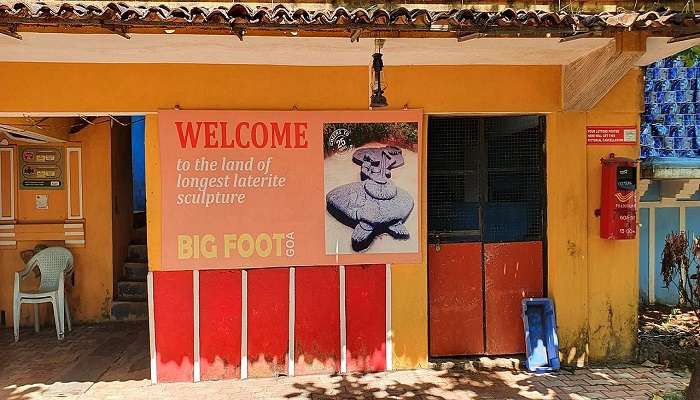
The museum is open all week to host the visitors at its open-air setting. Whenever you are in and around South Goa and you wish to know more about rural life of Goa as it was about a hundred years ago but in a fun way, then do visit this Big Foot Museum anytime between 9 AM and 6 PM. It is not any more time-consuming than a quick pit-stop for some of Goa’s exotic yet equally diverse flora and fauna, and if you happen to be here on your lucky day, you might be able to spot different types of birds that occasionally fly over to drop their greetings. Stop thinking further and come to Big Foot Museum to enjoy a breathtaking tour amidst nature, complete with chirping birds and blowing wind.
The ticket fee for entering this museum is only INR 100 per person and that too only for adults. For children aged between 3 to 10 years, this entry fee reduces to mere INR 50 per person. But this differential pricing ends as you step inside the museum complex, then if you further wish to visit the Sound and Light Museum, the fee payable is INR 100 per person. Additionally, you must pay INR 20 if you want to carry a still camera alongside.
Suggested Read: Best Tourist Places To Visit In Goa
Things To Explore In The Big Foot Museum
The most well-known festival among the list is the Goa Carnival which is a colourful and lively celebration filled with traditional music, dance, parades, and elaborate yet fancy costumes. Sadly, most of these traditions have appeared to be lost, forgotten or are not being practised anymore. That is what drives Ancestral Goa Museum. At Ancestral Goa, you learn about all such forgotten customs of Goa, through a visual and audio aid. Let’s take a look at some of the things you must not miss!
1. Most Honest Replication of Ancestral Goa
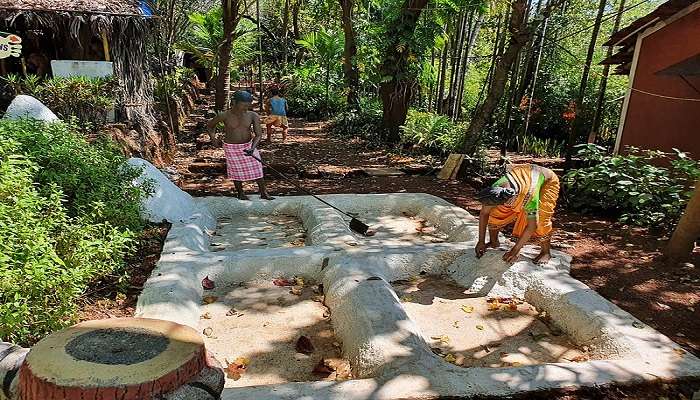
Ancestral Goa Museum is spread across a lush green landscape and features life-size sculptures depicting various aspects of traditional Goan village life, including artisans, farmers, musicians, and other community members engaged in daily activities. This destination also hosts cultural events and performances, such as traditional Goan dances, music, games and folk theatre, allowing visitors to experience the vibrant performing arts of the region.
The museum also houses a large traditional-style Goan village house, known as the Casa Araujo Alvares, which serves as a museum. The house is a replica of a traditional Indo-Portuguese house and showcases the architectural and interior design elements that were typical of Goan homes in the past. Visitors can closely explore this model house, which is beautifully adorned with antique furniture, traditional household items, and artefacts; all describing Goa in thier own voices and providing insights into the lifestyle of prominent Goan families from previous generations.
2. Why The Name ‘Big Foot’
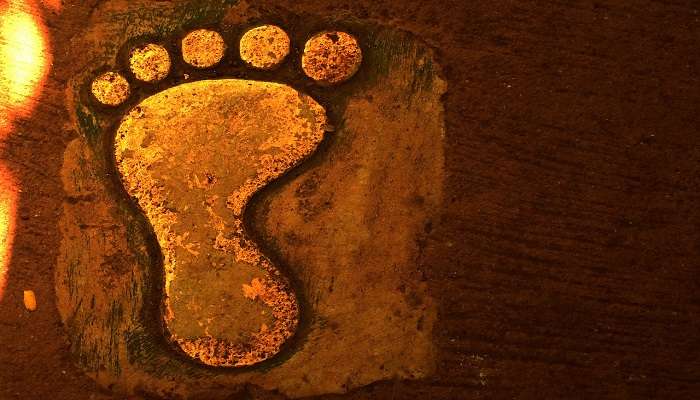
The wishing spot, or more commonly referred as – Big Foot, is located in the heart of the Museum of Ancestral Goa. The old legend of this Big Foot revolves around a man, who was noble and kind and always gave to the needy. But, he was tricked into losing all his passions in a trial set by the Gods for testing his kindness. In the end, his success led to his footprint being left behind. Now it is believed that the mysterious footprint serves as a point for people to make their wishes, and their wishes genuinely come true. Its importance is evident by how interchangeably it is mentioned that Big Foot is a museum (in place of the place’s original name) that showcases the work of local culture and heritage, promoting cultural dialogue and artistic expression.
In addition to its cultural exhibits, this Big Foot spot in the museum is surrounded by beautiful gardens and offers a serene and tranquil environment. Visitors are free to take leisure strolls through these enchanting gardens while simultaneously enjoying the flora and fauna of the place, and just relax in such peaceful surroundings.
Suggested Read: Hidden Places In Goa
3. Home of the Record-Holding Longest Sculpture
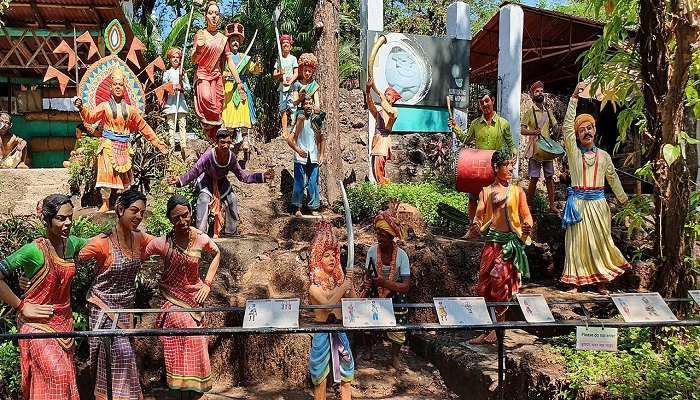
Maendra Alvares is the founder of the Museum. More than being an entrepreneur and conservationist, he is most recognized for his record breaking feat of carving a statue of the Saint Mirabai which is 14 feet by length and 10 feet in width – on the face of a single rock, he carved to monolithic statue in the record breaking duration of just 1 month. The record was first entered into the Limca Book of Records and till today is receiving various accolades and endless appreciation for this size.
Apart for this prominent sculpture, there are many more sculptures here and that too in many different sizes that provide a vivid representation of the customs, occupations, and social life of bygone eras, offering a nostalgic and immersive experience.
Further Read: Casinos In Goa
Goa is so much more than its beaches and the many adventure water activities and the ever-crowded clubs. Now that you have information on such unique museums that are fighting to preserve the cultural and historical significance of Goa, what are you waiting for? Do not let any further delay and book your trip to Goa now and explore these famous spots.
For our editorial codes of conduct and copyright disclaimer, please click here.
Cover Image Credit: JosephAssisFernandes for wikipedia
Frequently Asked Questions About Big Foot Museum
Why is this museum called Big Foot Museum?
The old legend of this Big Foot revolves around a man, who was noble and kind and always gave to the needy. Now it is believed that the mysterious footprint serves as a point for people to make their wishes, and their wishes genuinely come true. Its importance is evident by how interchangeably this museum is mentioned as Big Foot.
Is Big Foot Museum fun?
In the simplest of words, Big Foot Museum is far away from your general definition of a museum. It is more of a cultural hub dedicated to first conserving and then promoting the true Goan culture.
How is Goa depicted in mythology?
Goa has an interesting mythological story associated with its creation, which is rooted in Hindu mythology. As per the running legends, the sage Parashurama, an avatar of Lord Vishnu, played a significant role in the formation of Goa. Moreover, this particular act of creation by Parashurama is believed to have purified him and cleansed him of all his sins.
How was Goa created according to Hindu mythology?
As the story goes, the region that is now Goa was originally a part of the vast landmass known as Konkan which extended along the western coast of India. Parashurama, once, shot an arrow into the Arabian Sea. In a miraculous turn of events, the arrow landed instead and hence creating a landmass which became what is now known as Goa.
Which is the largest beach in Goa?
In a small state which appears to contain beaches in place of roads as well, Calangute is the largest beach in north Goa stretching from Candolim to Baga. It is a hub for tourists and backpackers, known for the beach shacks and water sports like parasailing, water surfing, banana ride and jet-skiing.
People Also Read:
Karen Blixen Museum Lamu Museum Sudha Cars Museum

As a Travel Content Writer, I live to conquer the world of globetrotting with words. With my unquenchable thirst for storytelling, I believe that my words will inspire you to travel around the world’s breathtaking landscapes. As for me, I am an unapologetic selenophile, who loves to wander around in a starry night!











